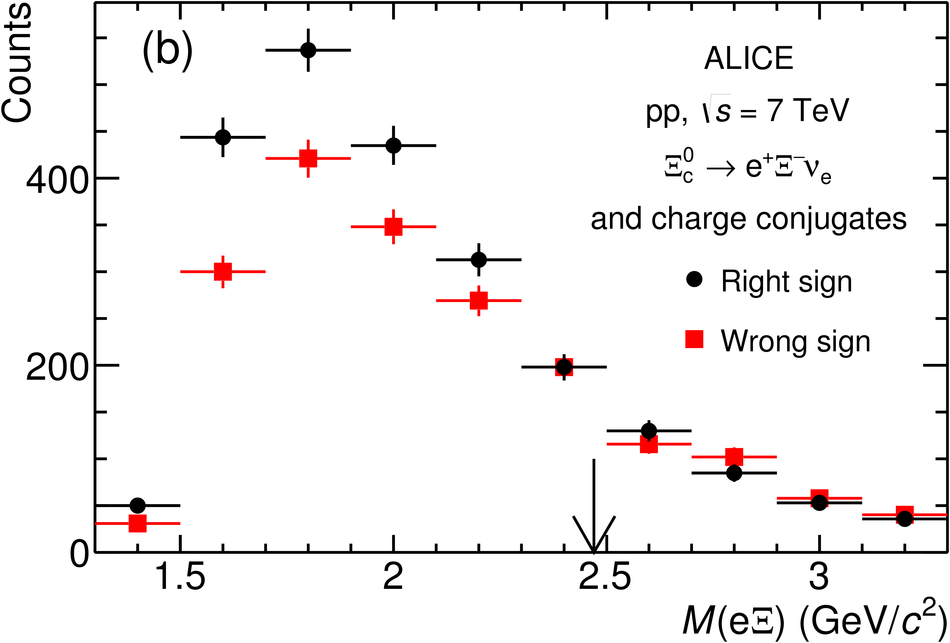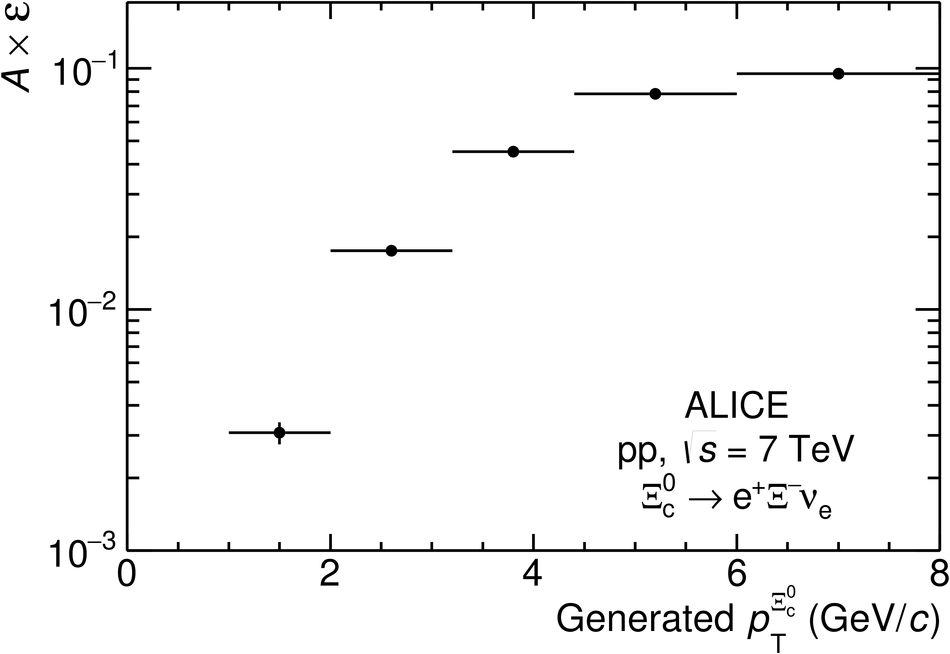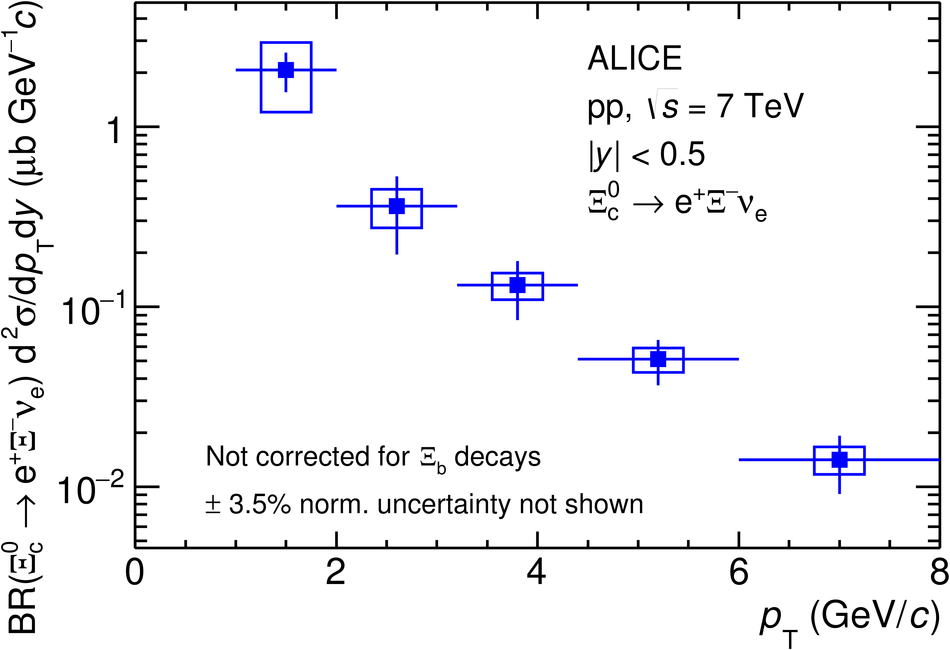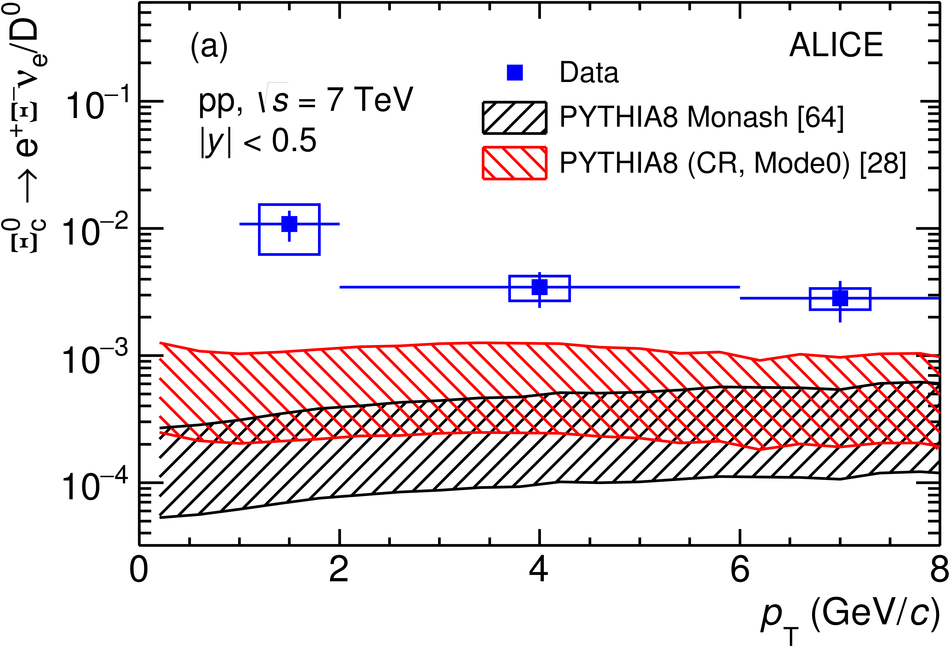The production of the charm-strange baryon $\Xi_{\rm c}^0$ is measured for the first time at the LHC via its semileptonic decay into e$^+\Xi^-\nu_{\rm e}$ in pp collisions at $\sqrt{s}=7$ TeV with the ALICE detector. The transverse momentum ($p_{\rm T}$) differential cross section multiplied by the branching ratio is presented in the interval 1 $<~$ $p_{\rm T}$ $<~$ 8 GeV/$c$ at mid-rapidity, $|y|$ $<~$ 0.5. The transverse momentum dependence of the $\Xi_{\rm c}^0$ baryon production relative to the D$^0$ meson production is compared to predictions of event generators with various tunes of the hadronisation mechanism, which are found to underestimate the measured cross-section ratio.
Phys. Lett. B 781 (2018) 8-19
HEP Data
e-Print: arXiv:1712.04242 | PDF | inSPIRE
CER-EP-2017-332







